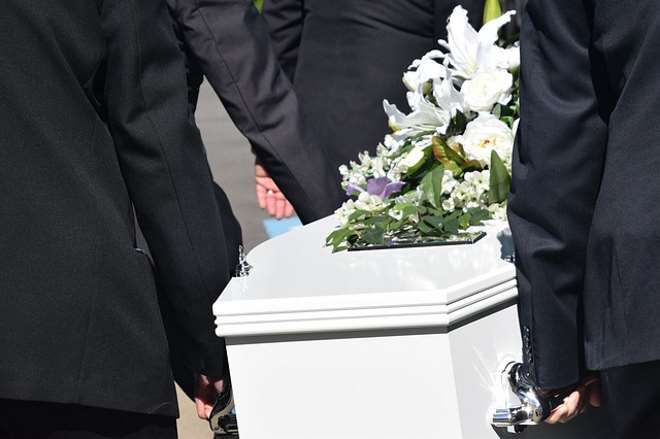Understanding the Cremation Process: Step-by-Step Overview
Cremation is a deeply personal choice, yet many people don’t fully understand what the process involves. From the moment a loved one is prepared for cremation to the final return of the ashes, each step is carried out with care, respect, and attention to detail. In this article, we walk you through the full process of modern cremation—from identification and preparation to the cremation itself, and finally, the handling of remains. Whether you are planning ahead, coping with a loss, or simply curious, this transparent look at the cremation process may bring clarity and peace of mind. See how modern cremation works and what to expect at every stage.

What are the identification and authorization procedures in modern cremation?
The cremation process begins with careful identification and authorization procedures. Upon arrival at the crematorium, the deceased is given a unique identifier, typically a metal tag that remains with them throughout the process. This ensures accurate tracking and prevents any potential mix-ups.
Before cremation can proceed, legal authorization must be obtained. In the UK, this involves submitting a cremation application form, typically completed by the next of kin or executor. Additionally, two certificates are required: one from the attending doctor or coroner confirming the cause of death, and another from a second, independent doctor verifying the first certificate’s accuracy.
What happens during the cremation itself?
Once all necessary paperwork is complete, the cremation can take place. The body is placed in a cremation container or casket made of combustible materials. Any medical devices or prosthetics that could be harmful during cremation are removed.
The container is then placed in the cremation chamber, also known as a retort. Modern cremation chambers are typically fueled by natural gas and can reach temperatures between 760 to 1150 degrees Celsius (1400 to 2100 degrees Fahrenheit). The intense heat reduces the body to bone fragments and ash, a process that usually takes two to three hours.
Throughout the cremation, the deceased is treated with utmost respect. Each cremation is performed individually, and the chamber is carefully cleaned between uses to ensure no commingling of remains occurs.
How are ashes collected and returned to the family?
After the cremation is complete and the chamber has cooled, the cremated remains are carefully collected. Any metal objects, such as surgical pins or fillings, are removed using strong magnets or manual selection.
The remaining bone fragments are then processed into a fine, sand-like consistency. This is what is commonly referred to as “ashes.” The ashes are placed in a temporary container or an urn if the family has provided one.
Most crematoria in the UK will hold the ashes for a short period, allowing the family time to decide on their final resting place. Options include scattering in a meaningful location, interment in a columbarium or cemetery plot, or keeping the urn at home.
What cremation options are available in the United Kingdom?
In the UK, several cremation options are available to suit different preferences and budgets. Traditional cremation involves a funeral service at the crematorium, followed by the cremation itself. This option allows for a formal goodbye and can include elements like music, readings, and eulogies.
Direct cremation has become increasingly popular in recent years. This no-frills option involves cremation without a viewing or ceremony beforehand. While it’s the most affordable choice, it may not provide the closure some families need.
Some facilities offer witness cremation, where family members can be present as the body enters the cremation chamber. This can be a meaningful experience for those who wish to be involved in every step of the process.
How much do cremation services cost in the UK?
The cost of cremation in the UK can vary significantly depending on the type of service chosen and the location. Here’s a general overview of cremation costs:
| Service Type | Average Cost Range | What’s Included |
|---|---|---|
| Direct Cremation | £1,000 - £1,500 | Basic cremation, no ceremony |
| Simple Cremation | £1,600 - £3,000 | Basic service at crematorium |
| Traditional Cremation | £3,000 - £5,000 | Full funeral service, viewing |
| Witness Cremation | Additional £100 - £300 | Attendance at cremation |
Prices, rates, or cost estimates mentioned in this article are based on the latest available information but may change over time. Independent research is advised before making financial decisions.
These costs typically include the cremation itself, doctor’s fees for certification, and the crematorium’s charges. Additional expenses may include the celebrant or officiant, flowers, obituary notices, and the urn or scatter tube for the ashes.
It’s worth noting that costs can vary significantly between different regions of the UK. Urban areas, particularly London and the Southeast, tend to have higher cremation costs compared to other parts of the country.
In conclusion, understanding the cremation process can help families make informed decisions during a challenging time. From the initial identification procedures to the final handling of ashes, modern cremation is carried out with care and respect. By exploring the various options available and considering the associated costs, individuals can choose the most appropriate cremation service for their needs and circumstances.




